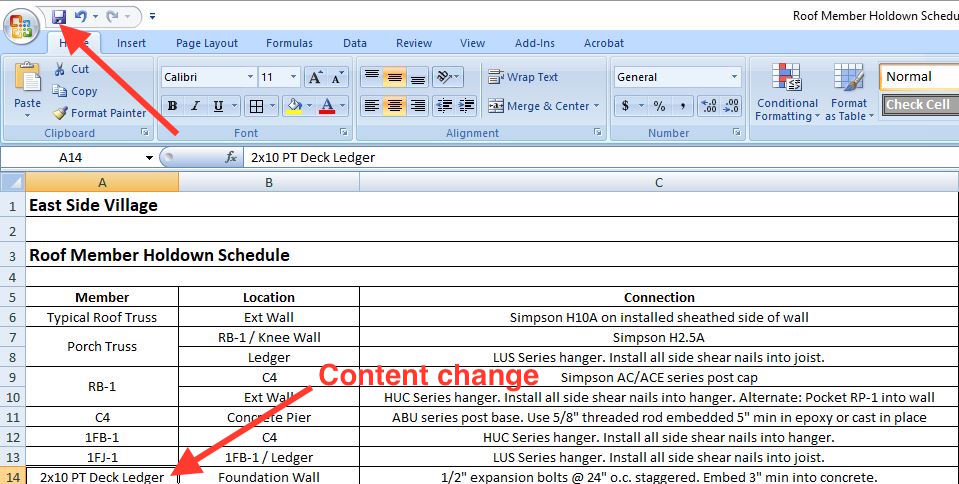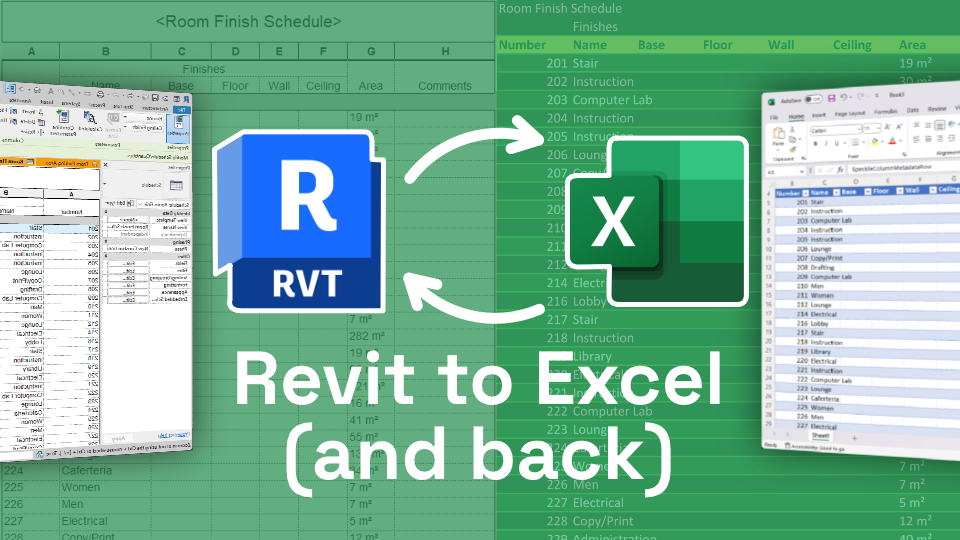Revit Tool Choice for Streamlined Modeling and Style
Wiki Article
Mastering the Art of Data Assimilation: How to Seamlessly Import Excel Info Into Revit
Are you battling to import Excel files into Revit efficiently? Look no more! In this short article, we will assist you through the process of grasping the art of information assimilation. Discover the importance of seamless combination in Revit and discover the Excel documents format for Revit integration. Prepare to prepare your Excel information easily and follow our detailed guide to import files right into Revit. With our ideal techniques, you'll achieve data combination success in no time at all. Allow's obtain begun!Recognizing the Importance of Data Integration in Revit
Understanding the importance of data integration in Revit is essential for smooth importing of Excel data. When you incorporate information from Excel right into Revit, it enables you to effectively update and manage information throughout the entire project. This combination ensures that your layout and building procedure is precise and updated.By integrating data, you can easily import and update criteria, routines, and even geometry in Revit. This gets rid of the need for hand-operated data entry, conserving you time and minimizing the risk of mistakes. With Revit's information assimilation abilities, you can maintain consistency and precision in your job, while also boosting partnership among team members.

Discovering the Excel Documents Style for Revit Combination

In order to efficiently integrate Excel files right into Revit, it is critical to ensure that the information is formatted properly. This includes properly classifying rows and columns, in addition to structuring the data in a way that works with Revit's data schema. Revit uses specific parameters and groups to arrange information, so it is vital to line up the Excel information with these specifications to ensure a smooth combination.
Additionally, it is very important to keep in mind that Revit only sustains specific data kinds when importing from Excel. These consist of text, numbers, and days. Any kind of various other data kinds, such as formulas or conditional format, will not be identified by Revit and might cause issues throughout the integration procedure.
Preparing Your Excel Data for Seamless Import Into Revit
To ensure a smooth combination process, you'll require to correctly format and tag the columns and rows in your Excel data prior to importing it into Revit. Due to the fact that it allows Revit to properly interpret and arrange your information, this step is crucial. Start by analyzing your Excel data and determining which rows and columns contain appropriate details for your Revit project. Then, make certain to identify each column with a detailed and clear header. This will certainly help you and others quickly recognize the purpose of each column and prevent complication throughout the import process.Following, ensure that the data in each column is appropriately formatted. For instance, if you have a column for measurements, see to it that all dimensions are regularly formatted in the very same units of dimension. Revit relies on consistent formatting to precisely analyze and import information.
In addition, it is very important to check for any type of empty cells or variances in your information. Revit might not be able to read or import information from cells that are empty or have mistakes. It is advised to assess your Excel information and clean up any incongruities prior to importing it into Revit.
Step-By-Step Overview to Importing Excel Data Into Revit
As soon as you have actually correctly formatted and labeled your Excel data, you can conveniently import it right into Revit by following this step-by-step overview. To begin, open Revit and navigate to the "Insert" tab. Click "Import CAD" and choose "Import Excel" from the dropdown menu. A new window will certainly show up, asking you to find the Excel data you desire to import. Browse your computer and select the Excel file, then click "Open."Next, a dialog box will show up, allowing you to personalize the import setups. Here, you can select the worksheet you wish to import, specify the variety of cells to import, and pick the suitable devices for your revit tools information. Once you have actually made your choices, click "OK" to continue.
Revit will certainly currently display a preview of your Excel information. Take a minute to make sure and assess the preview that whatever looks proper. If needed, you can make modifications to the import setups by clicking the "Setups" button.
Finest Practices for Information Assimilation Success in Revit
See to it you adhere to these ideal methods to make certain effective assimilation of information in Revit. First and foremost, it is vital to arrange your information in Excel prior to importing it into Revit. This indicates making sure regular calling conventions, correct format, and exact information depiction. Next off, utilize Revit's integrated devices for information mapping. This will certainly permit you to match the columns in your Excel documents with the equivalent criteria in Revit. Be conscious of the devices and information kinds when mapping the information, as any type of discrepancies can lead to errors in the integration procedure.Another crucial practice is to regularly verify and update your information. Additionally, make usage of data recognition tools within Revit to recognize any type of errors or variances in the integrated information.
Lastly, it is advised to establish a clear process for information combination. This includes specifying obligations and roles, establishing a communication network in between staff member, and establishing a routine cadence for information updates and testimonials. By complying with these ideal practices, you can make sure a seamless and effective assimilation of data in Revit, eventually boosting the efficiency and precision of your project.
Final Thought
In verdict, mastering the art of information integration is critical for seamless import of Excel submits into Revit. Comprehending the relevance of data combination in Revit is the primary step in the direction of successful combination. Discovering the Excel file format for Revit combination aids in recognizing the requirements and restrictions. Preparing the Excel data appropriately and adhering to a step-by-step guide is necessary for a smooth import procedure. By adhering to best practices, you can make sure information integration success in Revit and make one of the most out of your task.When importing data from Excel into Revit, it is vital to recognize the file format and just how it can impact the assimilation process (revit plugins). Revit makes use of particular criteria and groups to organize information, so it is crucial to line up the Excel data with these criteria to make certain a seamless integration
Be conscious of the devices and data types when mapping the information, as any type of inconsistencies can lead to mistakes in the combination process.
In addition, make usage of data recognition tools within Revit to recognize any type of errors or incongruities in the integrated information.

Report this wiki page